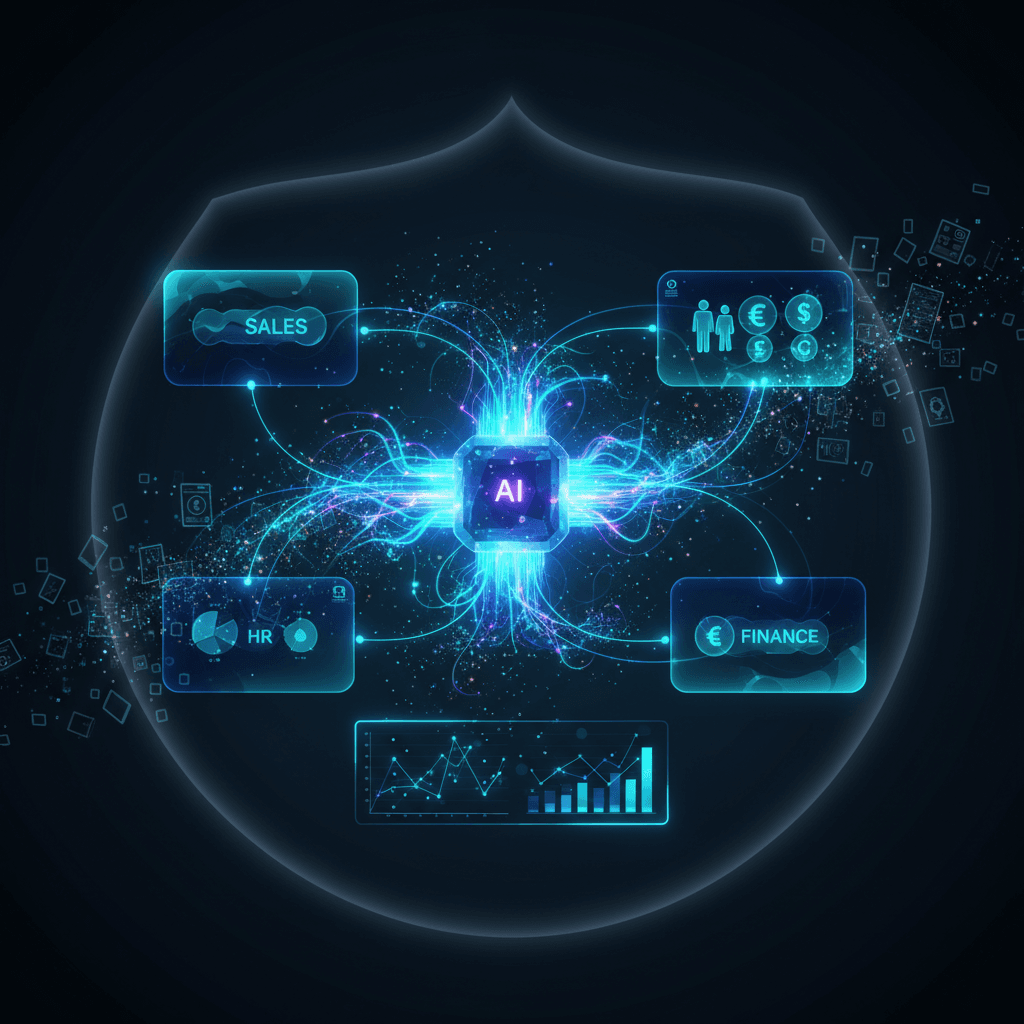Zoho Transforms Zoho One into AI-Powered Business OS, Eliminating App Sprawl.
AI-driven contextual intelligence unifies Zoho One's 50+ apps, transforming them into a seamless, anti-fragmentation business OS.
November 19, 2025

In a significant move to combat business software fragmentation and information sprawl, Zoho has unveiled a major overhaul of its Zoho One platform, embedding a powerful layer of AI-driven contextual intelligence across its comprehensive suite of over 50 applications. The upgrade aims to transform the user experience from an application-based model to a unified, platform-centric system, enabling more efficient workflows and deeper, actionable insights for its more than 75,000 global customers.[1][2][3][4] This strategic enhancement focuses on unifying the user experience, integrations, and intelligence to address the growing challenge of "app fatigue" where employees lose productivity toggling between numerous disconnected cloud tools.[5][6] By placing AI and context at the core of its operating system for business, Zoho is positioning itself to deliver a more seamless and intelligent work environment without altering its existing pricing structure.[7][1]
The centerpiece of the upgrade is the profound integration of Zia, Zoho's proprietary AI assistant, which now delivers what the company calls "federated intelligence."[8][9] Zia is engineered to aggregate and contextualize data from not only the vast array of Zoho applications but also from third-party platforms, breaking down pervasive data silos.[8][9][10] This allows users to receive consolidated, actionable answers from a single query, spanning multiple departments and functions like CRM, HR, and finance.[6] For instance, a user can ask Zia for a complete picture of a customer relationship, and the AI can pull information on sales, support tickets, and project timelines into a single, coherent response.[6][10] Further enhancing this capability is the integration of Zia Hubs, an intelligent content management system that automatically organizes and indexes internal documents, executed contracts from Zoho Sign, and recordings from Zoho Meetings, making institutional knowledge easily searchable and retrievable.[8][1][2][11]
To complement the enhanced AI capabilities, Zoho has completely redesigned the user experience to be more intuitive and context-aware. The most significant change is the introduction of "Spaces," a new top-level navigation system that groups applications by purpose, such as Personal, Organisation, and Department-specific functions.[7][1][9][3] This structure is designed to streamline workflows and minimize the need for users to switch between different application windows to complete tasks.[12] The new interface also features a customizable Action Panel that consolidates upcoming meetings, tasks, and messages, alongside an expanded dashboard that aggregates data from all connected apps into a single, personalized view.[1][9] In a further bid to boost contextual collaboration, the update includes the addition of Vani, a visual-first virtual workspace for brainstorming, mind mapping, and planning.[1][9][13][14]
Underpinning these user-facing changes is a fundamental overhaul of the platform's integration and administration architecture. Zoho One now features a centralized integration panel where administrators can view, monitor, and configure all connections—whether between Zoho apps, third-party services, or even third-party to third-party workflows via Zoho Flow.[5][9][15] This provides IT teams with unprecedented visibility and control over the flow of data within their organization.[4][15] The platform also introduces new outcome-based integrations, such as a "Smart Offboarding" tool that automates the complex process of managing user transitions, device data, and permissions in one guided flow.[8][12] On the security front, an administration console powered by Zoho Directory adds advanced features like anomaly detection, Bring Your Own Keys (BYOK) encryption, and comprehensive audit logs, addressing the sophisticated security and compliance needs of modern enterprises.[8][1][13]
The strategic implications of this AI-powered upgrade are significant for the broader enterprise software industry. By leveraging its ownership of the entire technology stack—from data centers to the applications themselves—Zoho is able to deliver a deeply integrated and secure AI solution where customer data is not used for training general models.[2][16][17] This move directly challenges the "best-of-breed" approach that often leaves businesses grappling with a fragmented and costly collection of disparate software tools.[15] By focusing on practical, contextual AI that fades into the background to enhance productivity, Zoho is making a compelling case for the power of a unified platform.[16] The enhanced Zoho One represents a deliberate shift from simply providing a suite of apps to delivering a cohesive, intelligent, and secure operating system for business, designed to provide customers with operational peace of mind.[9][14][15]
Sources
[6]
[7]
[9]
[10]
[12]
[14]
[15]
[16]
[17]